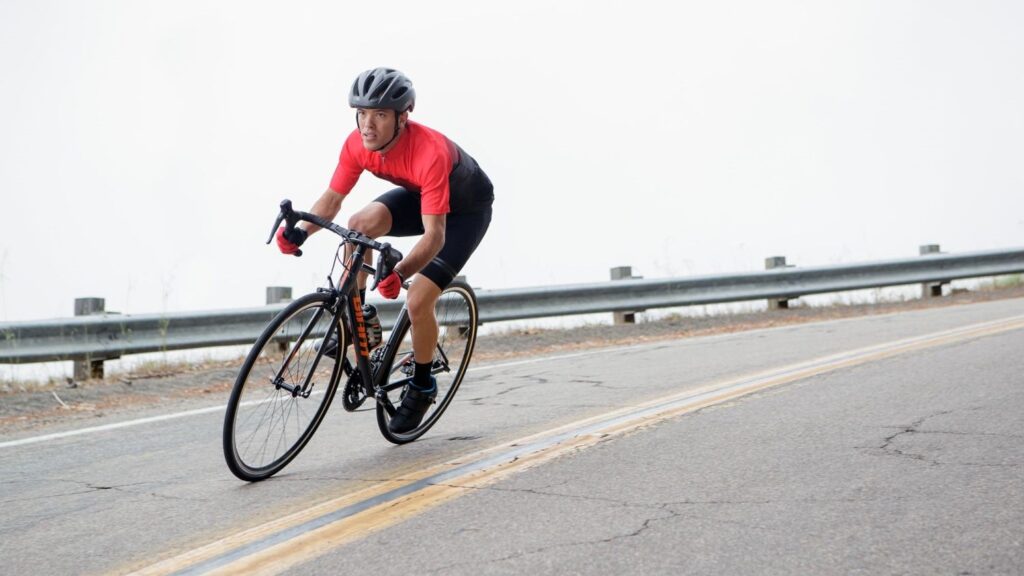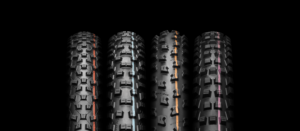How to Improve Your Cycling Performance
Tour de France has champions to portray physical greatness. Their spirit of being a champion is a combination of tenacity, endurance, and success.
No matter where you end up, you should always try and start from a humble beginning to grow great steps.
Whether you are starting by cycling around the streets of your neighborhood, along the coastlines or scaling up the local hill: always trying to improve your skills and performance should be a choice to make.
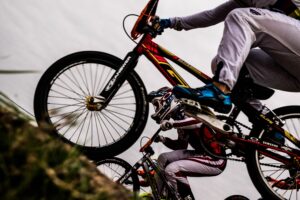 No matter where you end up, you should always try and start from a humble beginning to grow great steps.
No matter where you end up, you should always try and start from a humble beginning to grow great steps.
Whether you are starting by cycling around the streets of your neighborhood, along the coastlines or scaling up the local hill: always trying to improve your skills and performance should be a choice to make.
This article will give you information on how you can improve your cycling performance.
Here are five key areas that you need to master:
- Fitness
- Bike maintenance
- Equipment
- Technique
- Safety
This is explained below.
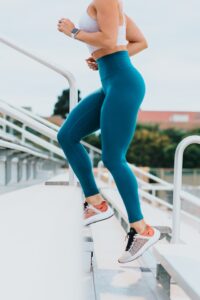
Fitness
The following ways will help you stay fit to improve your performance on the bike:
Increasing your cycling intensity
Training has different cycles of intensity and they include:
- Endurance – you can improve your aerobic fitness through endurance. This is where your heartbeat is raised and maintained at 65 to 80 percent of your maximum heart rate by a cycling activity.
- Interval – this adds extra stress to your muscles and you can get this by doing intervals during a hill climb. This should be done at 90 percent of your maximum heart rate.
- Recovery – the recovery of your muscles is needed for great cycling performance. Your recovery ride should be at a low intensity of 60 percent of your maximum heart rate.
Cycling more
Cycling more times can improve your performance in the long run. However, remember that recovery is important.
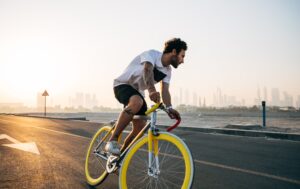 Setting goal targets
Setting goal targets
Setting goals and achieving them will enable you to gain fitness productivity. Setting goals will allow you to develop a plan to achieve your objectives and stay motivated throughout your cycling experience.
The following tips will help you set effective goals:
- Establish the specific fitness goals that you want to achieve.
- Divide your goals into short-term, medium-term and long-term.
- Develop a process to achieve your goals.
 Bike Maintenance
Bike Maintenance
Maintaining your bike will improve your cycling performance.
The following are the ways to maintain your bike:
- Keep your bike clean
Cleaning your bike will improve its performance and prolong its lifespan. Depending on the conditions that you ride your bike in, the drive chain, chains, wheels and gears can be affected. Always clean your bike when you get home from a riding trip.
- Keep the tires inflated well
Your tires are prone to puncture if they are not inflated well. Do not use hand pumps to inflate your tires. Instead, use a standing track pump as it can tell you the amount of air you have put because it has a pressure gauge.
- Check the brakes pads
Regularly inspect the brake pads for any tears and wear. Make sure that the brake pads are not damaged to a point where there is metal to metal contact. This will result in the brake rotors being destroyed quickly.
Replace the brake pads if the remaining braking material is less than 1.5 millimeters.
- Lubricate
Use a lubricant that is designed for bikes when your bike experience metal to metal contact. The lubricant should address:
The bikes mechanical parts to repel moisture, minimize friction and noise as well as improve the bike’s performance.
The different climate and terrains your bike will be exposed to.
- Your bike needs regular service
Your bike should be serviced once in every 500 or 1000 kilometers. During the service, all the different parts of the bike should be assessed for maximum performance.
- Ensure that the bike’s wheels spin ‘true’
Spinning true is when your bike’s wheels spin round and straight. This adds to your bike’s performance and you can find this out by turning over your bike and pedaling the wheels. The ability of your bike to brake effectively can be affected if the wheels are not true.
- Get yourself the perfect saddle
Investing in a perfect saddle will protect you and give you comfort. The wrong types of saddle may cause discomfort and numbness. The best sitting place is your ‘sitting bones’ and depending on your pelvis size, the width varies.
Invest in a saddle that is flat on top and is comfortable to your sit bone’s width
When riding, it is important to carry repair items in case your bike experience some mechanical failure and damage. The following are the essentials that you need to take with you when you go for a ride:
- Saddlebag
This is a small bag that you can use to store things such as snacks, lip balm, mobile phone or sunscreen.
- Flat repair kit
Your repair kit should have a spare tire tube, pump, tire levers and tire patches.
- Rain gear
You need to carry rain gear with you to keep you dry when it is raining while riding. Ensure that they are comfortable and still allow your body to breathe. Rain gear includes rainproof bags, cycling jackets and pants.
Technique
A good technique on the bike will improve your cycling performance and allow you to efficiently cycle. The following are the technical areas you can improve:
- Gears
You can improve your cycling performance and bike maintenance by effectively changing gears on the right gradient and terrain. You should find the right gear hat allows you to pedal at a good pace without making you feel that you are pedaling gently or harder.
The following are the general rules when it comes to gears:
Use low gears to climb hills.
Use middle gears for flat terrain.
High gears will help you accelerate and pedal at a steady pace when descending.
- Braking
As a cyclist, you need to master the essential skill of braking efficiently. You should be keen on the feedback from your bike’s tires and brakes. The best way to practice is to ride in a quiet surrounding, slowly increase the speed and then use the brakes to stop the bike.
You should be able to know the time it takes for your bike to stop and understand whether or not the tires are losing grip, skidding or effectively stopping the bike.
The front brake is the most efficient one to use because it has 70 to 80% of the stopping power. On the other hand, the speed of the bike is reduced by the rear brake.
Most cycling beginners fear that they will fly over the handlebars if they use the front brakes to stop the bike. However, this should not happen if you use the right technique, that is squatting down behind the saddle.
When riding, regulate the speed of the bike using the rear brake or bring yourself to a halt with it.
- Navigating corners
The art of cornering can take your cycling experience to another level. Ensure that your body is in a good position to avoid losing momentum when navigating a corner.
To lower the center of gravity, lower your body over the bike’s front. This will enable you to control the bike when riding through a corner.
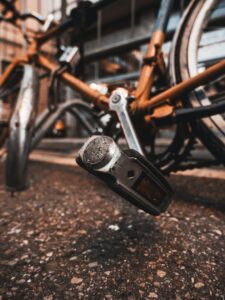
- Pedaling
Having an efficient ankling, commonly known as a pedal stroke enables you to cycle with less difficulty and more power. You can efficiently produce more power when you draw the force downward.
Safety
Whether you are using your bike for commuting or recreation, it is important to ride safely and protect yourself from any potential danger. You should always wear safety gear, obey the traffic rules of your region, and make use of hand signals.
Wearing bright colors will increase your visibility and this could save your life. Be aware of your surrounding and always look ahead for any cars and obstacles. Do not ride on the inside side of large turning vehicles such as trucks and buses.
Extra Tips to Improve your Performance
The following tips will help you to increase your average speed and cycle faster:
- Lower your body closer to the handlebars and tuck in your elbows. This will reduce the wind resistance enabling you to ride faster.
- Listen to music as it can reduce your perception of effort and you can pedal hard without noticing. However, be aware of your surrounding noise to avoid getting into an accident.
- Ride with friends. This is because you will share the wind’s resistance and you will be motivated to increase your effort.
- Avoid unnecessary braking as it is a waste of momentum and energy. It will require more pedaling to go back to the same speed.
- Ride on the drops. This will minimize your aerodynamic drag, improve handling in your bike, and help you descend and corner comfortably.
- Ride out into the headwind when you are fresh and energized and ride back home in a tailwind when you are fatigued.
- Lose weight. This will enable you to ride faster especially when climbing a hill as the force of gravity is less affected.
- Build some cycling muscles to pedal faster.
- Wear tighter clothing as they are designed to keep you dry and cool making riding less tiring. Loose clothing can slow you down as it adds a lot of drag.
Final thoughts
Ensuring that your fitness level and technique are great will improve your cycling performance. Keep your bike in good condition and have the necessary equipment for your ride at hand. Above all, stay safe by following all the traffic rules and wearing the necessary cycling gear.

